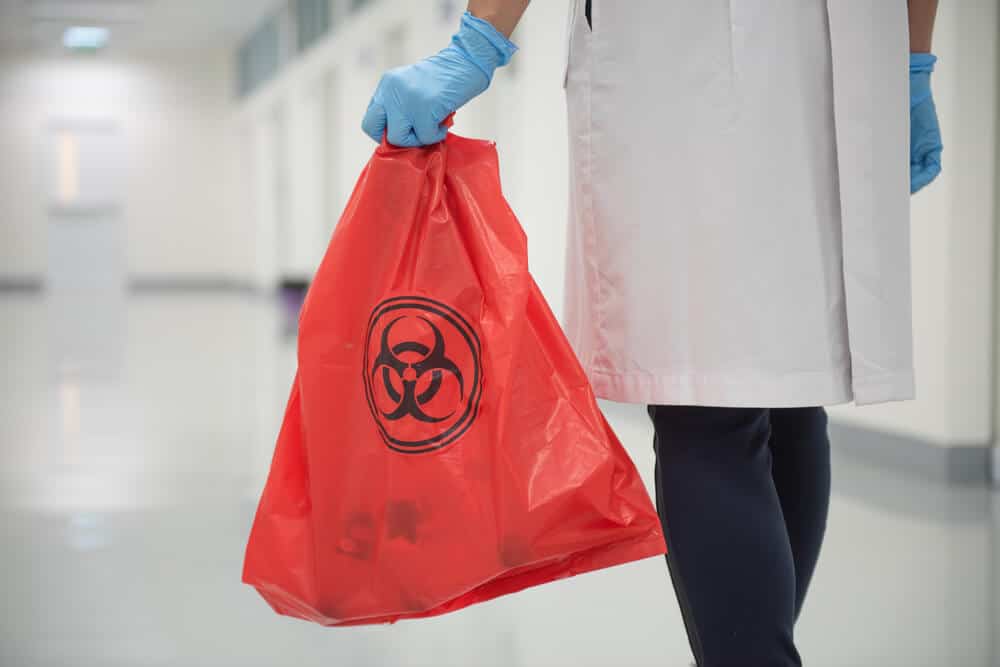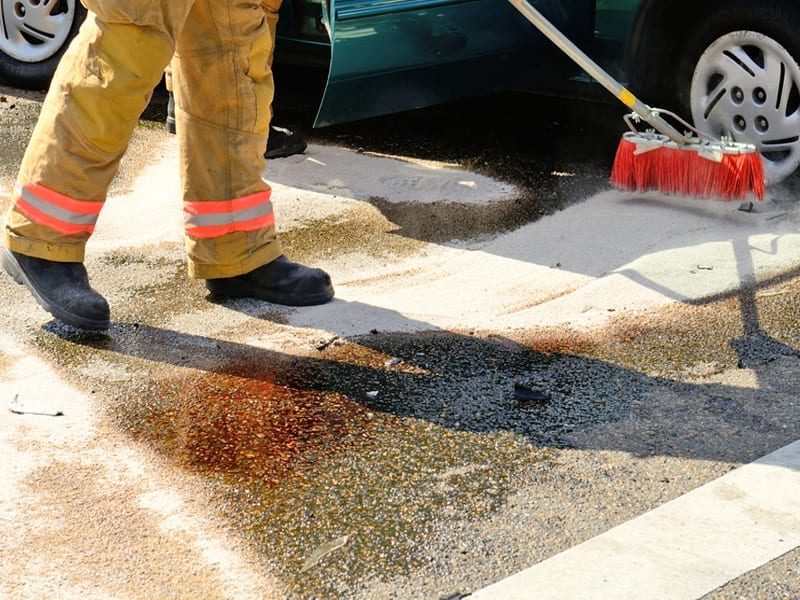Expert Homicide and Suicide Cleanup: Compassionate and Discreet Solutions
Expert Homicide and Suicide Cleanup: Compassionate and Discreet Solutions
Blog Article
Professional Biohazard Cleansing and Purification for Blood, Bodily Fluids, and Hazardous Materials
The possible health dangers associated with direct exposure to biohazards underscore the important requirement for meticulous handling and complete cleanup. As we browse the detailed landscape of biohazard cleanup, recognizing the nuances of policies, conformity, and the specific devices at play becomes critical in guaranteeing a secure and comprehensive decontamination process.
Health Risks of Biohazard Direct Exposure
Exposure to biohazards postures considerable wellness dangers that can result in serious consequences for people and communities alike. Biohazards incorporate a wide variety of biological materials, consisting of blood, physical fluids, mold, germs, infections, and other possibly transmittable materials. When individuals come right into call with these biohazards, whether through crashes, inappropriate handling, or environmental direct exposure, they encounter the risk of contracting severe ailments or diseases.
One of the main wellness risks connected with biohazard exposure is the transmission of contagious illness. Bloodborne virus such as HIV, hepatitis B and C, and different germs can be existing in biohazardous products, posturing a straight threat to human health. Inhaling air-borne biohazards like mold and mildew spores or coming right into call with infected surface areas can additionally bring about respiratory issues, allergies, and other adverse wellness results.
Moreover, biohazard exposure can have long-term health and wellness ramifications, with some diseases materializing years after the preliminary call (Blood Cleanup). Consequently, it is crucial to prioritize correct biohazard cleansing and decontamination to reduce these health risks and make certain the security of communities and people

Specialized Educating for Biohazard Cleanup
When it concerns taking care of biohazard cleanup effectively and safely, specialized training plays a fundamental duty in ensuring appropriate decontamination procedures are adhered to. Biohazard clean-up calls for details knowledge and skills to properly minimize dangers connected with bloodborne virus, bodily fluids, and dangerous products. Professionals trained in biohazard cleanup go through rigorous guideline on how to safely take care of, get rid of, and get rid of biohazardous materials to avoid contamination and direct exposure.
Specialized training for biohazard cleaning covers a variety of vital topics, consisting of correct individual protective equipment (PPE) use, bloodborne virus awareness, decontamination strategies, and hazardous waste disposal procedures. People learnt biohazard cleaning are equipped with the essential experience to analyze contamination degrees, determine potential threats, and implement appropriate cleanup procedures in conformity with governing standards.
Continuous training and education are extremely important in the field of biohazard clean-up to stay updated on the most recent decontamination technologies, safety and security methods, and guidelines. By buying specialized training, biohazard cleanup specialists can successfully respond to emergency cleaning circumstances and protect both public health and the setting.
Value of Proper Purification Methods
Utilizing correct decontamination strategies is critical in biohazard clean-up to efficiently eliminate unsafe materials and minimize health threats. Effective purification not only makes certain the removal of noticeable traces of blood, bodily liquids, and other biohazards yet likewise targets invisible microorganisms that might position significant health and wellness threats otherwise properly removed. By following rigid purification procedures, educated professionals can dramatically decrease the threat of exposure to unsafe bacteria, infections, and microorganisms that might bring about diseases or infections.
Correct purification strategies entail using specialized devices and anti-bacterials that are particularly made to reduce the effects of biohazards properly. Detailed cleansing and disinfection of polluted locations are important to avoid the spread of microorganisms and make certain a secure environment for occupants. Additionally, the appropriate disposal of biohazardous waste complying with purification treatments is essential in preventing contamination of other surfaces or individuals.

Tools and Devices for Safe Clean-up
When dealing with blood, physical fluids, or harmful materials, biohazard my company cleansing specialists rely on specialized equipment to reduce direct exposure risks and extensively decontaminate the damaged location. Furthermore, biohazard cleansing kits having anti-bacterials, absorbent products, and biohazard bags are used to securely contain and dispose of infected items.
Advanced cleaning devices like hospital-grade disinfectants, HEPA-filtered vacuum cleaners, and misting machines are utilized to sterilize surface areas and remove biohazards efficiently. Specialized tools such as sharps containers and biohazard waste disposal bins are made use of to securely take care of sharp objects and biohazardous waste materials. By using the appropriate equipment and tools, biohazard cleaning professionals can make sure a comprehensive clean-up procedure that focuses on safety and reduces health and wellness dangers for both employees and owners of the affected space.
Laws and Conformity in Biohazard Cleansing
Correct adherence to regulations and conformity criteria is critical in biohazard cleaning to make sure the safety of both workers and the setting. Federal government firms such as OSHA (Occupational Safety and Health And Wellness Administration) and the EPA (Epa) have actually established details standards for biohazard cleaning treatments to reduce health and wellness risks and environmental contamination. These regulations cover a series of aspects consisting of the handling, transport, and disposal of biohazardous products, in addition to the required training and protective tools needed for workers associated with the clean-up process.
Biohazard cleaning firms have to remain updated with these policies to guarantee that their operations fulfill the called for security standards. Failing to adhere to these laws can cause extreme effects, consisting of fines, legal activity, and threatening the wellness of people and the atmosphere. By following rigorous policies and conformity procedures, biohazard cleaning companies can effectively minimize dangers and ensure a thorough and Visit This Link risk-free cleanup procedure for all parties included.
Conclusion
In final thought, biohazard cleaning and decontamination call for specialized training, appropriate techniques, and adherence to guidelines. Direct exposure to blood, bodily liquids, and unsafe materials presents significant health and wellness threats, making it important to make use of the best tools and tools for risk-free cleaning. By following stringent protocols and guidelines, specialists can efficiently mitigate the threats related to biohazard exposure and make certain the security of both themselves and others.
As we browse the intricate landscape of biohazard clean-up, recognizing the subtleties of regulations, conformity, and the customized equipment at play ends up being vital in guaranteeing a secure and comprehensive purification process. (Blood Cleanup)
When it comes to dealing with biohazard cleaning successfully and safely, specialized training plays a basic role in making sure proper decontamination treatments are followed.Using correct decontamination strategies is essential in biohazard cleaning to properly reduce and remove dangerous materials wellness risks. Additionally, biohazard cleaning packages containing disinfectants, absorptive products, and biohazard bags are made use of to safely dispose and have of contaminated products.
Federal government firms such as OSHA (Occupational Safety and Health Administration) and the EPA (Environmental find Security Company) have established particular guidelines for biohazard clean-up procedures to minimize health threats and ecological contamination.
Report this page